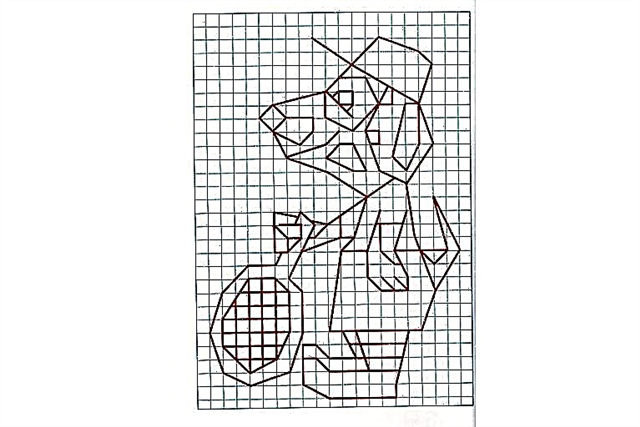Cottage cheese casserole is a healthy and nutritious meal for a one year old baby. It perfectly suits the needs of the child's body. Cottage cheese casserole for a 1 year old child contains the most essential vitamins and minerals necessary for the full growth of a baby.

Delicious casserole
The benefits of cottage cheese casseroles for a child
Fermented milk casseroles provide invaluable benefits for the growing body. They contribute to the full development of the child, strengthen the nail and bone tissue. The dish increases the activity of the brain, normalizes the intestinal microflora.
Composition and nutritional value
Curd consists of fermented milk, from which milk whey has been removed. This product does not contain enzymes. Thanks to this, it retains its taste for a much longer time than other products made from sour milk.
Curd contains such useful substances:
- proteins, fats and carbohydrates in optimal proportions;
- vitamins: A, PP, C and B;
- folic acid.
- minerals: calcium, phosphorus, iron, etc.;
- amino acids.
The curd also contains lactic acid bacteria. They heal the intestinal microflora. The rapid digestibility of this dairy product is due to the fact that it contains practically no lactose.
Important! For one-year-old children, cottage cheese is especially useful, because it contains a large amount of protein necessary for growth.
The calorie content of low-fat cottage cheese is 145 kcal per 100 grams, and fatty - 345 kcal.
How to choose the right cottage cheese
When choosing cottage cheese for a child, you need to pay attention to its such quality indicators:
- a good quality product has a white, creamy shade that does not give off greens;
- it tastes non-bitter and non-sour;
- the smell is pleasant and without the feeling of acid;
- high-quality cottage cheese does not stratify, has a delicate, slightly oily consistency, not runny, but not too dry.

Quality cottage cheese
You shouldn't buy cottage cheese in the market from a random seller. The greatest danger of such a product is bacteria. Once in the child's body, they can cause severe poisoning. If you buy curd from a store, you need to pay attention to the packaging and product information.
Attention! You should not buy cottage cheese for your child, from which fat has been removed - calcium is best absorbed in the presence of fats.
The purchased cottage cheese is checked for quality at home. Dropping iodine tincture on a piece, check if starch is added to the product. If added, the iodine will turn blue. If a piece of cottage cheese that has lain on a saucer at room temperature turns yellow and dry, then it is real.
When to introduce curd casserole
This product is introduced into complementary foods from ten months of age. The dish is suitable for any meal.
How to make a casserole
A large number of curd casserole recipes for toddlers allows you to prepare a delicious dish without much effort. For the little ones, a dish is prepared without adding semolina. For him you will need:
- 500 g of cottage cheese;
- 60 g of raisins;
- 2 eggs;
- 3 tbsp granulated sugar.

Curd food without adding semolina
Grind eggs with granulated sugar, pour into the curd mass and stir thoroughly. Soak the raisins in hot water for about 20 minutes, pour into the curd mass. Put it in a bowl and bake for 40 minutes.
Children love dishes with buckwheat. The components for making casserole with its presence are as follows:
- 100 g of cottage cheese;
- 4 tbsp buckwheat or flour;
- 2 eggs;
- 100 g sour cream;
- 2 tsp Sahara.

Casserole with buckwheat
Buckwheat needs to be boiled in water or steam. Then it combines with curd. Grind eggs with sour cream, sugar, pour two-thirds of this amount into a mixture of cottage cheese and buckwheat porridge and mix. Place the ingredients in a bowl, pour over with a mixture of eggs and sour cream. Bake for 20 minutes.
A casserole for a one-year-old child will be even tastier if you cook cottage cheese for it at home. To do this, you need to pour kefir into a jar, lay a small piece of cloth on the bottom of the pan, pour water there and put the jar. The saucepan should be heated over low heat. Kefir must be removed 10 minutes after the water boils. Strain the resulting product through a sieve.
In the oven
For a curd casserole for a child in the oven you will need:
- 250 g of cottage cheese;
- 2 tbsp semolina;
- 2 eggs;
- 100 ml of milk;
- 1 tbsp Sahara.
The step-by-step recipe is as follows: heat milk and pour semolina into it. Beat the whites of the eggs, and grind the yolks well with granulated sugar and cottage cheese. Add semolina to the resulting mass and mix thoroughly. After that, add the whipped egg whites, mix the mass thoroughly. Put the curd mass in a special container, greased with fat, and cover with foil. Bake in the oven for 30-40 minutes.
Using a multicooker
For a cottage cheese casserole for a child per year in a multicooker, you must take:
- 500 g of cottage cheese;
- 100 g semolina;
- 2 eggs;
- 50 g butter;
- 150 g of sugar.
Add the components specified in the recipe to the curd and mix them thoroughly. Add semolina and stir again. Leave for 30 minutes, then place in a greased bowl. Bake for an hour in baking mode at 160 or 180 degrees.

Multi-cooker casserole
You can also cook a casserole in the microwave.
Important! These recipes in the oven and slow cooker should be given to children after they reach one year old.
Norms of complementary feeding cottage cheese casserole
When giving a cottage cheese casserole to a child, you should adhere to the established amount and frequency of feeding.
How often to give
The casserole can be given daily if the child's body reacts normally. In this case, it is necessary to carefully monitor the amount and not overfeed the baby with cottage cheese. After all, large portions of it lead to an excess of calcium in the body. This adversely affects the work of the excretory system.
Number
The first time complementary foods are introduced, starting with a minimum quantity of 5 grams. A new product is best given in the morning. This is necessary to follow the reaction of the child's body.
Attention! If the first signs of allergy appear, you should contact your pediatrician. In this case, give the casserole again after a month.
If the child reacts normally to the new product, you can continue giving it. Gradually, the amount of children's casserole is increased to 60 grams per day.
What can be combined with
This tasty and healthy dish can be combined with:
- apples;
- dried apricots;
- pumpkin;
- sour cream and other fermented milk products;
- milk.
There are also potato and squash casseroles. According to Dr. Komarovsky, they should be introduced into complementary foods very carefully so as not to provoke indigestion.
Possible Power Problems
When introducing cottage cheese casserole into complementary foods, the child may experience constipation or diarrhea, flatulence. Allergies are rare.
Constipation is due to the fact that complex proteins are not yet fully digested in the body. To avoid digestive upset, you should add a fermented milk product to the diet in limited quantities, gradually increasing the portion.
Attention! If colic appears when the casserole is introduced, this indicates lactose intolerance.
Diarrhea can also appear due to the inability of the digestive system to digest fermented milk products.
Signs of allergies
Most often, it manifests itself in the form of small rashes on the skin. Sometimes swelling of the mouth, lips, development of eczema is possible.

Allergy to cottage cheese
Due to the use of cottage cheese casserole, babies have:
- intestinal pain;
- nausea;
- vomiting;
- dizziness;
- diarrhea.
Cottage cheese casserole for a child is a healthy and nutritious dish. It enriches the baby's body with useful substances, contributes to the harmonious development of the baby. When introducing complementary foods, care must be taken so that allergies do not develop.



